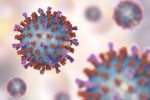Survey of US doctors estimates prevalence of HAE-nl-C1INH
Internet-based questionnaire included diagnosis, treatment information
Written by |

The number of cases of hereditary angioedema with normal C1 inhibitor (HAE-nl-C1INH) within the U.S. was estimated to be between 1,230 and 1,331 from May 2019 and April 2020, according to a survey conducted among U.S. physicians.
Patients waited a mean of six years to receive a diagnosis, which was informed in many cases by their response to different treatments. Genetic testing was used in the diagnosis of 43% of patients.
These “results may be useful for developing studies to assess treatment efficacy and safety, and potentially improve the diagnosis for and management of this patient population,” the researchers wrote.
The study, “Hereditary Angioedema With Normal C1 Inhibitor: US Survey of Prevalence and Provider Practice Patterns,” was published in The Journal of Allergy and Clinical Immunology: In Practice.
Gene mutations typically cause HAE
HAE is characterized by sudden swelling attacks that affect the deeper layers of the skin.
Usually, HAE is caused by mutations in the SERPING1 gene, which contains instructions for the production of a blood protein called C1-inhibitor that regulates a chain of reactions leading to inflammation and blood clotting.
These mutations may lower the production of C1-INH (HAE type 1) or result in the production of a dysfunctional protein (HAE type 2). In both cases, the lack of functional C1-INH leads to the abnormal activation of the cascade and to swelling.
There is also a third and rarer type of HAE, in which patients have normal levels of C1-INH (HAE-nl-C1INH). Its symptoms are similar to those of HAE type 1 and 2. However, this specific form of the disease can be caused by mutations in other genes, such as the F12 gene, which provides instructions for making coagulation factor 12, or may be of unknown origin when a clear genetic cause cannot be identified.
Currently, there is a lack of validated tests to effectively diagnose these patients, and genetic tests do not identify all patients with the disorder. To date, treatment of acute crises for patients thought to have this form of HAE has been similar to that used in other forms of HAE.
“However, treatment outcomes have not been systematically reported and controlled clinical studies are lacking,” the researchers wrote.
Survey estimates number of patients, treatment options
Now, researchers conducted an internet-based survey of U.S. physicians to estimate the prevalence of HAE-nl-C1INH in the country and to describe how these patients are being treated.
Potential participating physicians were identified in the U.S. HAE Association database as of July 2020, and from a prescription database containing HAE-related prescriptions issued from May 2019 through April 2020.
A total of 113 physicians provided data to estimate HAE-nl-C1INH prevalence, and 81 physicians treating HAE-nl-C1INH patients provided data about treatment patterns.
Researchers estimated there were 1,230 to 1,331 HAE-nl-C1INH patients within the U.S. between May 2019 and April 2020. The analysis was corrected for physicians with extreme rates of prescriptions or prevalence (too low or too high).
The mean time to diagnosis for HAE-nl-C1INH was approximately six years (range 2.4-13.5 years), with physicians confirming a substantial delay in diagnosis. Although this period is similar for more common types of HAE, it might be “additionally driven by the lack of definitive diagnostic laboratory tests,” according to the researchers.
Commonly used medications
Physicians commonly used patients’ response to medication as a tool for diagnosis, particularly antihistamines (used by 73% of physicians), corticosteroids (57% of physicians), or HAE-specific medications (74% of physicians).
Among physicians who reported using patient responses to HAE-specific medications to inform HAE-nl-C1INH diagnosis, Firazyr (icatibant) was the most commonly used medication (87% of those physicians). Firazyr is a medicine normally used to treat acute angioedema attacks.
Genetic testing in the F12 gene was reported by 43% of physicians as a tool to diagnose HAE-nl-C1INH, while other types of genetic testing were reported by 5% or less.
“The development of more reliable, validated, and easily accessible methods to diagnose HAE-nl-C1INH accurately will also facilitate more rigorous evaluation of the efficacy and safety of available and future therapies,” the researchers wrote.
Regarding treatment for acute HAE-nl-C1INH symptoms, Firazyr was the most prescribed medication (73% of physicians), followed by high-dose antihistamines (15%). Other prescribed HAE-specific treatments included Ruconest (13%), Berinert (10%), and Kalbitor (8%).
Physicians reported 54% of the patients with HAE-nl-C1INH received long-term preventive treatment. Those patients experienced a mean of 16 attacks per year before starting treatment.
The main reasons for recommending initiating preventive treatment were the frequency, severity, and predictability of acute attacks, followed by patient request. The most commonly prescribed preventive treatment was Takhzyro (lanadelumab, 40% of physicians), followed by Haegarda (17% of physicians) and Cinryze (8% of physicians).
“To our knowledge, this is the first study surveying US HAE-treating physicians to estimate the prevalence of patients with HAE-nl-C1INH and to provide a comprehensive overview of how patients with HAE-nl-C1INH are given a diagnosis and treated in the United States,” the researchers wrote. “In addition, we were able to assess the most common management strategies and potential unmet needs associated with acute and preventive treatment.”






